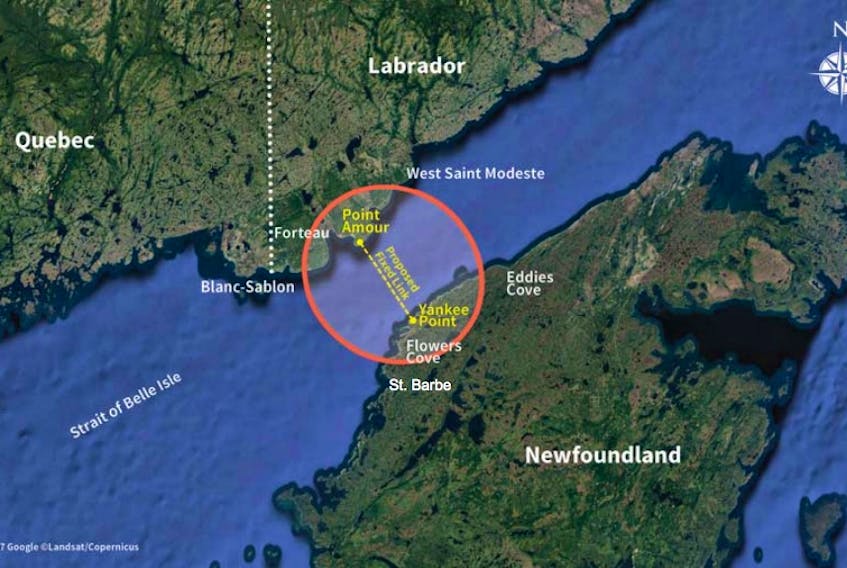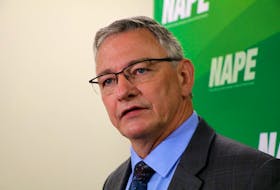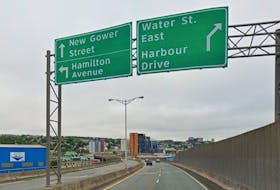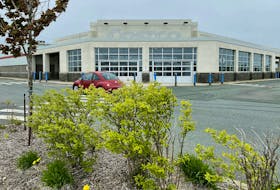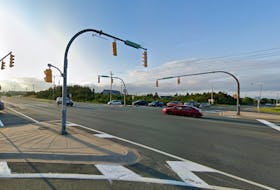Newfoundland and Labrador is one step closer to a billion-dollar fixed-link, but the project is still decades away.
A $260,000 pre-feasibility study conducted by engineering firm Hatch through Memorial University’s Harris Centre says it is technically possible for such a link to be built.
The least expensive option would be an18-kilometre, single-rail tunnel drilled 20 metres below the seafloor of the strait of Bell Isle. That version of the project would cost $1.6 billion to construct, though that number grows to $2.7 billion with financing costs considered, according to the Hatch report. The single-rail option would take 15 years to complete, accounting for four years of initial research needed before shovels break the ground.
Another option — for a single-lane road tunnel, allowing vehicles to drive through without having to board a train — would cost just over $2 billion to construct, without financing costs considered. The road option is estimated to take 14 years to complete.
Premier Dwight Ball, joined by Labrador MP Yvonne Jones and Transportation Minister Steve Crocker at a news conference on Wednesday, said the next step toward the link is a more detailed feasibility study, estimated to cost $20 million to $22 million.
Ball says the potential for federal and public-private partnerships will ease the burden on taxpayers, who still have the Muskrat Falls project to deal with.
“The taxpayers of this province can’t handle another megaproject. I’ve made that quite clear. This will have to be done through partnerships,” Ball said.
“We can’t ignore the fact, when you look at the Confederation Bridge, the significant economic and social impact that had on the island of P.E.I. We need to explore those options.”
The proposed options would see a similar drill used to complete the Chunnel that runs beneath the English Channel between England and France. Both the cheaper options call for one of those drills to create the tunnel that would connect Yankee Point, near Flower’s Cove, to Point Amour in Labrador.
Yet another option put forth by Hatch would see two such drills used, which would essentially meet in the middle, similar to what happened to build the Chunnel. That option would cost almost $4 billion before financing costs, but need only 11 years to complete.
The economic benefits to both Labrador and the western portion of the province were examined in a second study written by Harris Centre analysts Alvin Simms and Jamie Ward.
The study estimates between $1.9 million and $2.9 million in annual benefit to the areas, accounting for increased traffic travelling from Quebec and Ontario into the region.
The study also estimates that 60 per cent of traffic on Marine Atlantic would be diverted through the fixed link, accounting for the amount of goods and tourists coming from Ontario and Quebec.
The rest of the traffic would still need to use the Marine Atlantic Ferries, as the drive through the link would be much less efficient for freight coming from the Maritimes.
Ball said just a change in traffic would not mean a change in the constitutionally mandated ferry service.
“Marine Atlantic is part of the terms of (union) between Newfoundland and Labrador and Canada — that stays,” he said.
In order for the fixed link to work, Route 138 in Quebec would be extended to connect to the Trans-Labrador Highway, which would connect to the link. Ball says Quebec has already committed to work on extending that highway.
“With Route 138, $230 million already in the Quebec budget this year, we can’t ignore that when 138 opens up, this would create a unique route within Labrador itself,” he said.
“This is not about replacing Marine Atlantic, I want to make that quite clear.”
With the expectation of more economic activity on the province’s west coast as a result of the link, a long-mused thought experiment about the province arguably becomes more feasible: changing the capital city from St. John’s to Corner Brook.
Ball is the MHA for Humber-Gros Morne, an area of the province that has a lot to gain from the fixed link, according to the Harris Centre.
Ball says changing the capital city is not part of the plan.
“It certainly hasn’t come up,” he said with a laugh.
Twitter: DavidMaherNL

